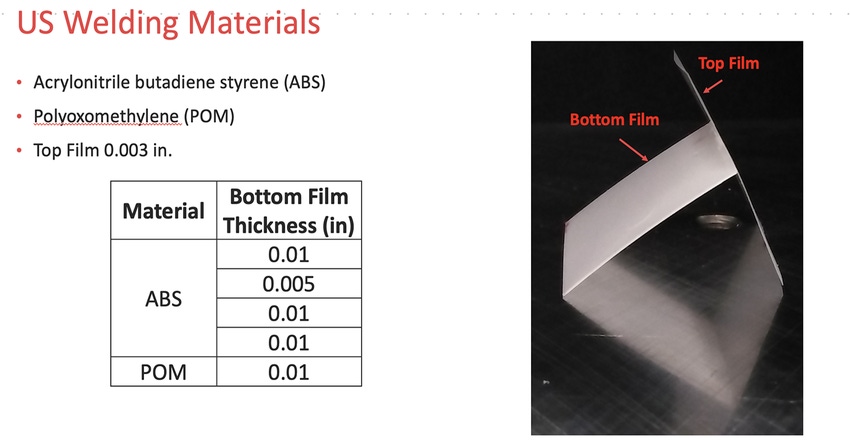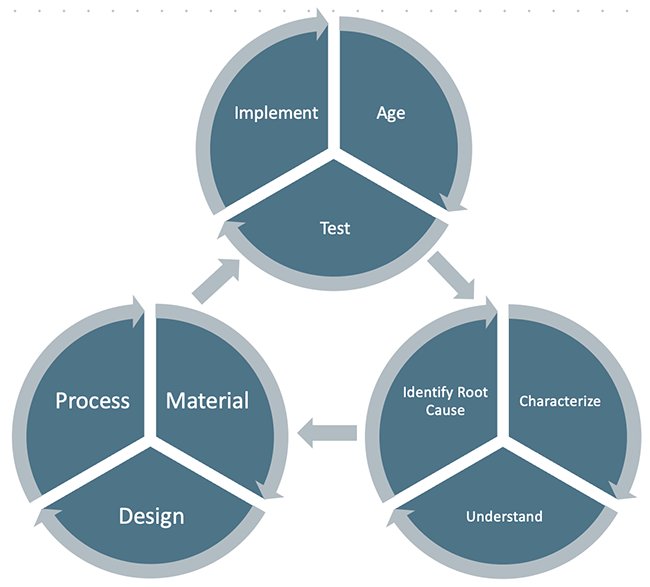The Complexities of Plastic-to-Plastic Welding, and How to Overcome Them
Jeff Ellis of EWI engineering consultancy knows a thing or two about joining plastics, because he’s seen a thing or two.
June 8, 2023

So, you’ve got your product design pretty much down and selected the materials with the properties the application requires, but some of the plastic parts need to be joined. You may discover that the joining technology you were considering won’t work with those particular materials, and that’s a problem. “Choosing the perfect material during the product development cycle that can’t be processed into the design you need is definitely an issue,” Jeff Ellis, PhD, senior technology leader at EWI, told PlasticsToday. The solution, he added, is to take into account the design, materials, and processing in parallel at the start of a project.
Joining plastics? It's complicated
EWI is an engineering consultancy that is dedicated to helping customers overcome complex manufacturing challenges. One of its areas of expertise is welding and joining various material combinations using a range of technologies. Ideally, engineers will think about process, design, and materials simultaneously at the initial stage of a project, but that doesn’t always happen and, to state the obvious, it gets quite complicated. Ellis cites one example involving plastic-to-plastic joining.
“You may think laser joining is the best approach for manufacturing your product, but if you have two unfilled polymers, heating is very difficult because they are so transmissive to that wavelength such that they don’t heat up. Infrared heating or 1-micron laser welding won’t work well in those applications, so we will recommend either hot tool, ultrasonic welding, or a 2-micron wavelength laser,” explained Ellis.
|
The three circles illustrate the methodology used by EWI in consultation with its customers. |
Problem solving of this nature is all in a day’s work at EWI. “We have a great polymers team that gets together and considers the various options,” said Ellis. “What materials and processes can we use? We come up with a table showing that this material will work for this process but not for that one. Or we have another material that can work with two different processes to make the shape you want. We apply our experience and expertise from having worked on many of these projects in the past to find the best solution for that particular product,” said Ellis.
Medical adds yet another layer of complexity
Joining plastics for medical applications adds yet more complexity to the process. For one thing, material selection is more limited, especially if the part comes in contact with the skin or is implanted. Testing requirements are also amplified.
Medical-grade polymer suppliers typically provide testing data, but you still need to do to tests yourself after you process the pellets, said Ellis. “If you take those pellets and injection mold them and then do secondary welding, you've put that polymer through two more heat cycles and you need to make sure it passes all of the regulatory requirements of the FDA,” said Ellis.
Another issue that may crop up is the use of ultrasonic welding in conjunction with microfluidic channels and similar applications, added Ellis. “That usually creates small particles, a definite no for the FDA. Small polymer particles that migrate into the body can create inflammation, so that's something the FDA will ask about during your 510(k) submission,” cautioned Ellis.
All about joining technologies at Plastec East
Ellis will discuss the various technologies available to join polymers to polymers, polymers to metal, composites to composites, composites to glass, and micro-welding in the Tech Theater at IME East in New York on June 14 at 10:30 a.m. One of the objectives of his presentation is to bring awareness to medical and other design engineers of the many tools available. “Hopefully, my presentation broadens their thinking and sets off some light bulbs,” said Ellis. “We didn’t know we could join metals to polymers that way, for example, or achieve a hermetic seal without adhesives. At EWI, we want to help designers through the process and make that robust device,” said Ellis.
IME East, which includes the co-located Plastec and Medical Design & Manufacturing (MD&M) events, comes to the Jacob Javits Convention Center from June 13 to 15. More information is available on the Plastec East page at PlasticsToday.
About the Author(s)
You May Also Like


.jpg?width=300&auto=webp&quality=80&disable=upscale)

